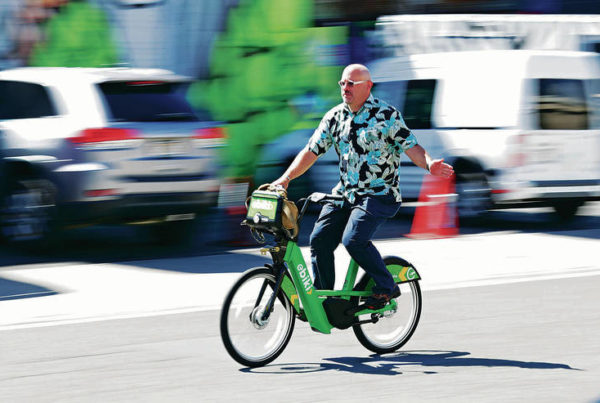Pacific Business News
January 25, 2019
by JANIS MAGIN
 Architect Joe Ferraro is using his experience of working on design in Antarctica over the past 35 years to build a focus on sustainability in Hawaii during his term this year as president of AIA Honolulu.
Architect Joe Ferraro is using his experience of working on design in Antarctica over the past 35 years to build a focus on sustainability in Hawaii during his term this year as president of AIA Honolulu.
Ferraro, principal of Ferraro Choi and Associates Ltd., moved to Hawaii in 1981 and first went to Antarctica about three years later to help design a laboratory. After starting Ferraro Choi and Associates in 1988, “that work followed me,” he told Pacific Business News.
Ferraro has been to the South Pole 14 times over the years, most recently two years ago. One of the larger design projects his firm did was the Amundsen-Scott South Pole Station, a project for the National Science Foundation that cost some $200 million.
“We worked on master planning for that and a lot of engineering before the actual design for six years, then actually designed the building for the station in 2008,” Ferraro said. The project, which was featured in the American Institute of Architects magazine Architect, was completed in 2010.
“It got me so concerned about what’s going on with climate change,” he said. “Over the years, the research going on at Antarctica, they’re very concerned with the melting of the ice sheet.”
One of the things AIA Honolulu is doing to address climate change this year is establishing a design for risk and resiliency committee, which will be chaired by architect Hale Takazawa and will work to identify disaster recovery solutions, both long- and short-term, involve people in the building trade organizations and regional planning groups and building programs and partnerships to share their solutions.
Is sustainability AIA Honolulu’s main focus this year? We’ve got a lot of foci. Being the new president, you always want to have a theme. Even more than a theme I think this is extremely important for architects in Hawaii and across the nation and the world. Buildings have a big impact on the environment. Over the last 18 years, systems like LEED have created much cleaner buildings, that’s basically doing business as usual at this point. We’ve got to do what we call zero-energy buildings, which don’t use any carbon greenhouse gases at all. They use solar, wind or water.
What’s an example of a zero-energy building? I’m very proud to say we did one in Kona in 2005-2006, the Hawaii Gateway Energy Center at the Natural Energy Laboratory of Hawaii. That’s an example of a building that’s using the resources available at the site. More and more buildings are doing that. You still have to plug a building in at this point but we’re trying to offset it using solar.
What are some of the other issues that AIA is working on? I’d say housing and [building] codes are the biggest ones in addition to sustainability. We’re still on the 2006 [International Building Code], believe it or not. It’s very close to being enacted to the new code. We as architects anyway are using the latest code. We do federal work, we do state work, and we just want to be ahead of the game. We’re all headed in the right place, it’s just that like any law it takes time to get it approved.







